 Staying fit should be a convenient and enjoyable experience, yet the ritual of packing a gym bag, commuting to a fitness center, and contending with crowds can often turn into a hassle. For many, these obstacles can deter consistent workouts.
Staying fit should be a convenient and enjoyable experience, yet the ritual of packing a gym bag, commuting to a fitness center, and contending with crowds can often turn into a hassle. For many, these obstacles can deter consistent workouts.
A viable solution to ensure seamless fitness sessions is creating a home gym. In evaluating the considerations for creating a home gym, one can ensure a tailored exercise environment that meets personal fitness goals and schedules. This post dissects the fundamental aspects of setting up a home gym to maximize your fitness journey efficiently and effectively.
Considerations For Creating A Home Gym
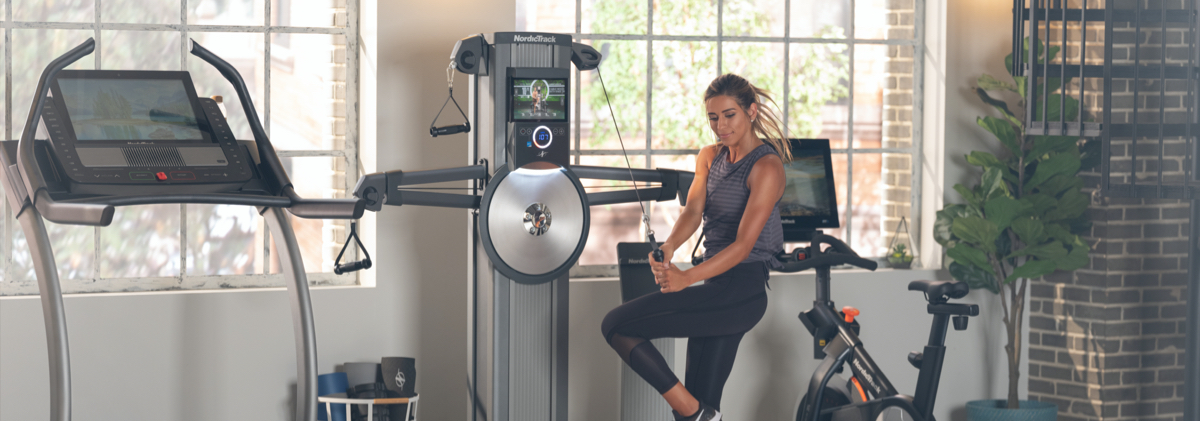
Choosing the right space in your home is crucial for your gym’s functionality. It’s essential to select an area that is both practical and comfortable. A spare room, garage, or even a basement can be transformed into an effective workout space. Ensure the area you choose has enough ventilation, natural light, and sufficient space to accommodate various equipment and exercises. It’s also wise to think about the flooring – cushioned or rubber flooring can help prevent injuries and protect your floors from heavy weights and equipment.
Space utilization plays a pivotal role in the design of your home gym. Consider the types of workouts you intend to perform and what equipment they might require. For a well-rounded gym, you might need space for a treadmill, dumbbell rack, or yoga mat. Make sure there is ample room for movement and flexibility exercises, minimizing the risk of accidents. Prioritize a clutter-free environment to enhance the productivity and safety of your workout sessions.
Equipment Selection

When it comes to choosing equipment, quality trumps quantity. A few high-quality pieces are often more beneficial than multiple subpar ones. Start by evaluating your fitness goals—whether you aim for strength training, cardio, flexibility, or a mix. Equipment like adjustable dumbbells, resistance bands, and kettlebells are versatile and occupy minimal space. For cardio, consider machines like a treadmill, stationary bike, or rowing machine, which can be used by multiple family members with diverse fitness levels.
Versatile equipment that caters to multiple workouts can be a smart investment. Multi-functional trainers, like cable machines, can facilitate a full-body workout without the need to purchase numerous individual machines. Before any purchase, read reviews and, if possible, try out the equipment in stores. Prioritize durability and ease of use to ensure your home gym remains an inviting space for years to come.
Shop Equipment
Budget Considerations
Your budget significantly influences the design and setup of your home gym. While it can be tempting to splurge on the latest equipment, it’s important to strike a balance between cost and quality. Identify the essential pieces of equipment and allocate a budget range for each. It might be beneficial to phase your purchases—start with the must-have items and gradually add more as your needs grow and budget allows.
Explore secondhand markets and online sales as well. Often, people sell barely-used gym equipment for a fraction of the original price. Additionally, look into financing options that some retailers offer, allowing you to spread the cost over time. Remember, creating an effective home gym is an investment in your health, so approach the financial aspect with consideration and long-term thinking.
Motivation and Aesthetics
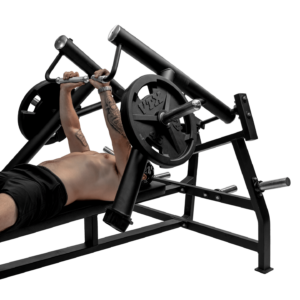
The ambiance of your gym can significantly impact your motivation and consistency. Aesthetic appeal, combined with functionality, can create a pleasant environment that encourages regular use. Decorate your space with mirrors, which not only help you monitor your form but also make the area feel larger. Add motivational posters or a sound system to boost your morale during workouts.
Lighting plays a critical role as well. Incorporate bright and adjustable lighting that energizes the space. Natural light is ideal, but if your gym is located in a basement or garage, invest in quality lighting solutions. Personal touches like adding houseplants or a mini-fridge for cold beverages can make the space more inviting and cater to your convenience.
Routine and Schedule Integration
Ensuring your home gym fits seamlessly into your daily routine is key to making the most out of it. Consider setting a consistent workout schedule that aligns with your lifestyle. Early morning sessions might be ideal to kickstart your day, while evening workouts can help release the day’s stress. The flexibility of a home gym allows you to break down your workouts into smaller, more frequent sessions throughout the day, amplifying health benefits.
Organize your workout plans and track your progress to stay motivated. Utilize fitness apps or write down your routine on a planning board in your gym. By maintaining consistency and monitoring your advancement, you can keep yourself on track, adapt to new challenges, and continue fostering a healthy lifestyle. tailored fitness environment that meets specific needs, promotes regular exercise, and eliminates many external barriers. However, to effectively harness these benefits, several factors must be addressed to lay the foundation for an optimal home workout setup.
Setting a Realistic Budget
One of the primary considerations for creating a home gym is establishing a budget. Costs can range significantly depending on the equipment and setup you intend to achieve. Start by categorizing your desired equipment into essentials and non-essentials. Essentials might include items such as dumbbells, resistance bands, and a mat, which together can form the backbone of your home workouts. Non-essentials could include more specialized or higher-end equipment like a treadmill, rowing machine, or weight bench. Creating a financial plan that accommodates immediate purchases while also outlining future upgrades can streamline the process and avoid overspending.
Cost-effective solutions are available, especially when prioritizing versatile equipment. For instance, adjustable dumbbells and resistance bands serve multiple functions and can replace several individual pieces of equipment. Seek out sales or consider purchasing second-hand items to save on initial costs.
Making the Most of Available Space
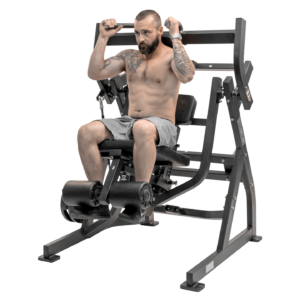
The amount of room available is another crucial aspect when pondering the considerations for creating a home gym. Mapping out your space effectively can profoundly influence the types of equipment you can install. A large, dedicated area such as a garage or a basement offers greater flexibility, allowing for the inclusion of bulkier machines like a squat rack or a treadmill. Conversely, smaller spaces like a corner of a living room necessitate creativity and organization—utilizing vertical storage for resistance bands or opting for foldable equipment can maximize your gym layout.
Surfaces too are integral to your planning. Flooring should absorb shocks and provide stability to avoid injury and protect your home’s infrastructure. Mats and interlocking foam flooring are excellent choices for both protecting your floors and creating a comfortable exercise platform.
Selecting Appropriate Equipment
The equipment selected must align with your fitness goals. Whether you aim to build muscle, improve cardiovascular endurance, or enhance flexibility, tailoring your gear to meet these aims is paramount among the considerations for creating a home gym. For resistance training, basic tools like an adjustable dumbbell set, kettlebells, and a weight bench are fantastic starting points. Cardiovascular enthusiasts might prioritize a treadmill, stationary bike, or elliptical trainer, whereas those focusing on flexibility could invest in yoga accessories like blocks and straps.
Additionally, factor in multi-functional equipment. Machines like cable stations or total gyms offer varied exercises in one compact unit, making them ideal for those with limited space.
Focus on Safety and Comfort
Safety cannot be overstated when evaluating the considerations for creating a home gym. Ensure that each piece of equipment is correctly assembled and maintained. Secure loose weights, and establish a clutter-free zone to minimize the risk of accidents. Furthermore, proper ventilation and lighting are crucial. A well-lit, airy space not only enhances your mood but also ensures clear visibility of your equipment, reducing the risk of tripping or mishaps.
Comfort also extends to your workout environment—install mirrors to check your form, use a fan to keep cool, and add personal touches like motivational posters or plants to make the area inviting. A pleasurable workout space encourages consistency and dedication.
Leveraging Technology for Enhanced Workouts
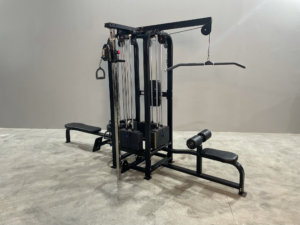
In this digitally advanced age, technology can significantly augment your home gym experience. Incorporating smart technology, such as a virtual personal trainer or fitness apps, provides real-time feedback and personalized workout plans. TVs and tablets can stream workout classes, providing variety and professional guidance from the comfort of your home.
Furthermore, wearable fitness devices like smartwatches and heart rate monitors can track your progress and even alert you to potential issues like overtraining, ensuring a balanced and effective fitness regimen.
Flexibility and Room for Growth
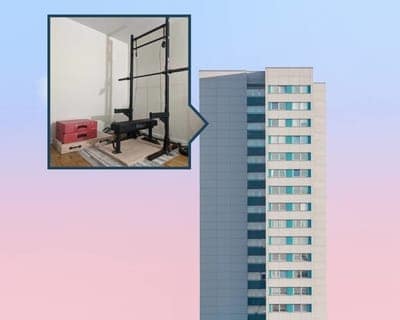
Considerations for creating a home gym extend beyond initial setup. As your fitness journey evolves, so too might your equipment needs. Design your gym with flexibility in mind, allowing for easy modifications or expansions. Perhaps today’s primary focus is on cardiovascular health, but down the line, weight training might take precedence. Opt for modular equipment, which can be reconfigured or easily stored when not in use.
Moreover, stay attuned to new fitness trends to keep your workouts fresh and engaging. Regularly assessing and updating your gym setup will maintain its relevance through all stages of your fitness journey.
Final Thoughts on Crafting Your Ideal Home Gym
Taking the time to deliberate over the considerations for creating a home gym ensures that you build a practical, enjoyable, and effective workout space tailored to your unique fitness goals. Within your budget, space, and preferred activities, crafting a gym with versatility, comfort, and safety at its core will enhance your motivation and drive.
Designing a space that grows with you, adorned with the right equipment and tech, lays a foundation for long-term health and wellness. By meticulously planning and incorporating these thoughtful considerations, you can transform an area of your home into a sanctuary where fitness and well-being are always within reach.
Whether you’re just starting or looking to refine your setup, these strategic insights provide the groundwork for a home gym that will sustain you through various fitness stages and goals. Ultimately, your home gym should be a place that fosters positive habits, encourages progression, and fits seamlessly into your lifestyle, making every workout session an anticipated part of your daily routine.


